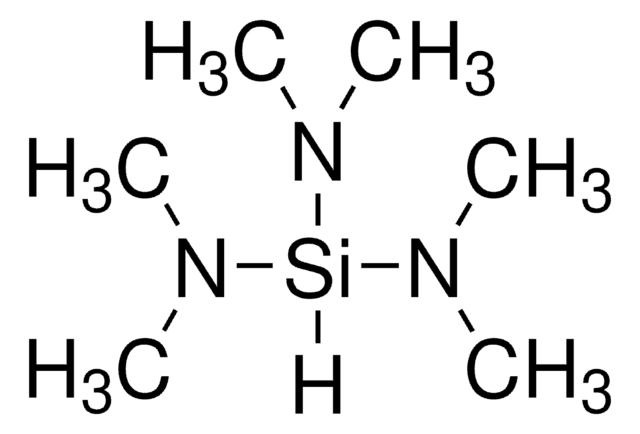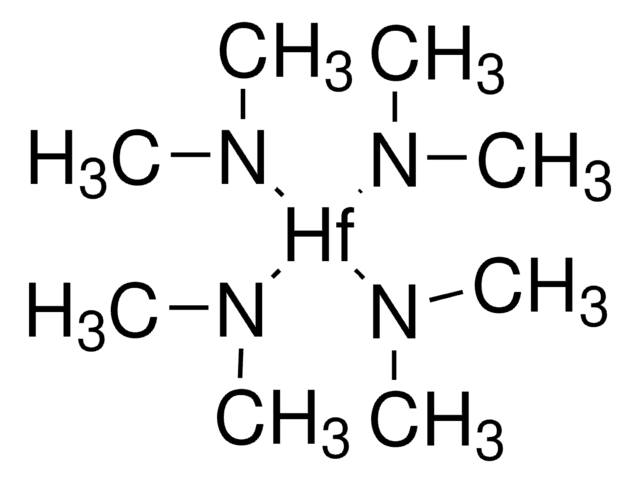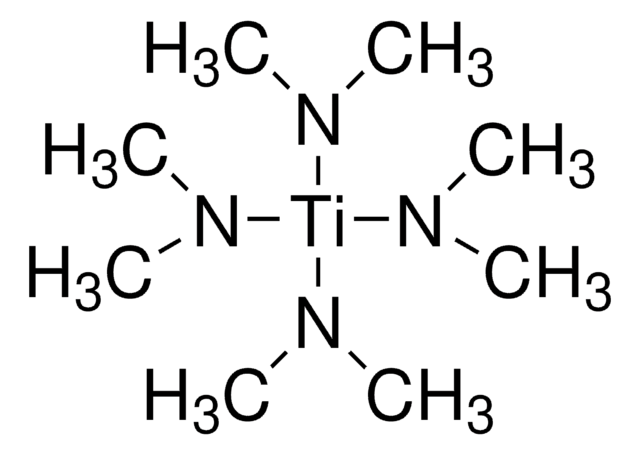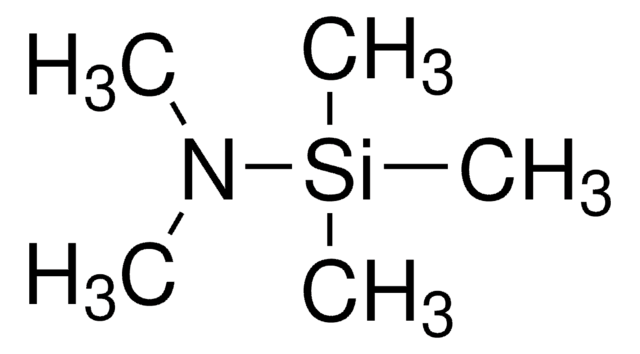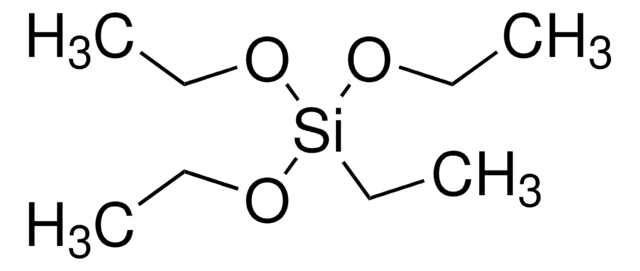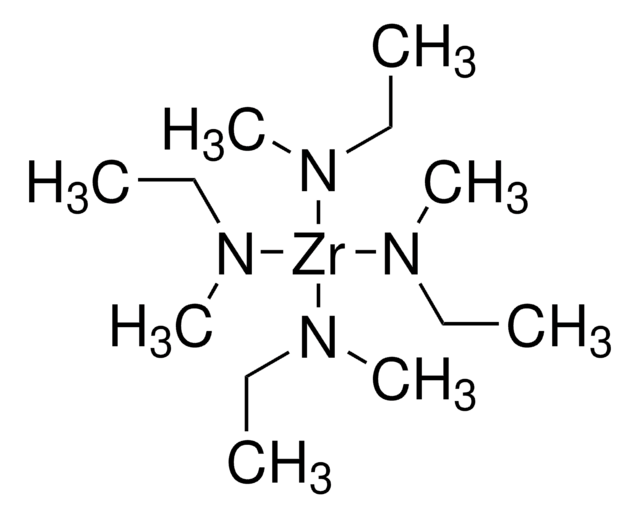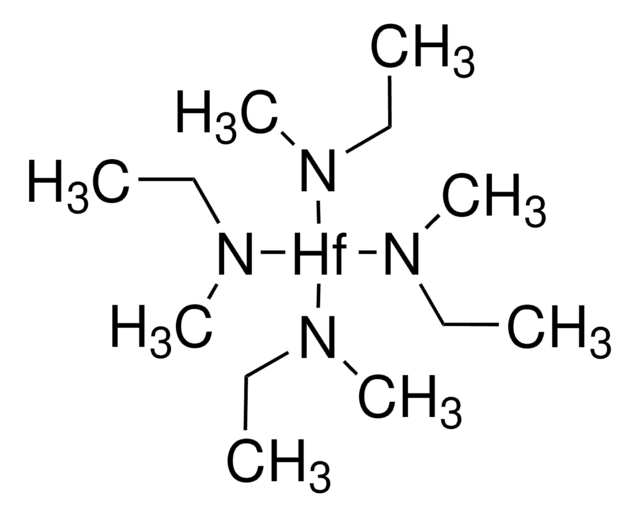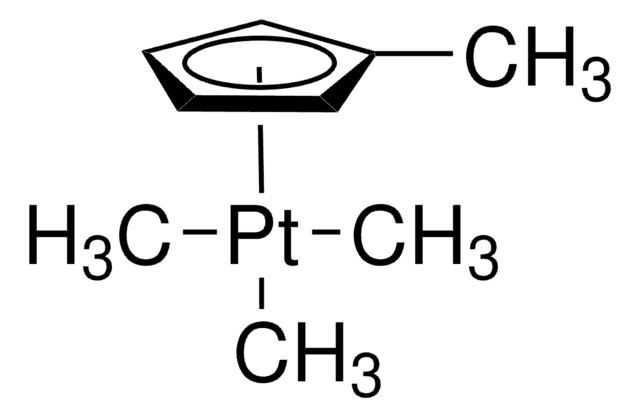759562
Tris(dimethylamino)silane
packaged for use in deposition systems
Sinonimo/i:
Tris(dimethylamino)silane, (Me2N)3SiH, N,N,N′,N′,N′′, N′′-Hexamethylsilanetriamine, Tris(dimethylamido)silane, N,N,N′,N′,N′′,N′′-Hexamethylsilanetriamine, TDMAS
About This Item
Prodotti consigliati
Livello qualitativo
Saggio
≥99.9% (GC)
Forma fisica
liquid
P. eboll.
142 °C (lit.)
Punto di fusione
−90 °C (lit.)
Densità
0.838 g/mL at 25 °C (lit.)
Stringa SMILE
CN(C)[SiH](N(C)C)N(C)C
InChI
1S/C6H19N3Si/c1-7(2)10(8(3)4)9(5)6/h10H,1-6H3
TWVSWDVJBJKDAA-UHFFFAOYSA-N
Cerchi prodotti simili? Visita Guida al confronto tra prodotti
Descrizione generale
Applicazioni
- As a silicon source for deposition of aluminum silicate on TiO2 anodes for dye-sensitized solar cells vis atomic layer deposition method.
- As a precursor to fabricate functionalized Si reinforced separators for Li-ion batteries.
Avvertenze
Danger
Indicazioni di pericolo
Classi di pericolo
Acute Tox. 3 Dermal - Acute Tox. 3 Inhalation - Acute Tox. 4 Oral - Eye Dam. 1 - Flam. Liq. 2 - Skin Corr. 1B - Water-react 2
Rischi supp
Codice della classe di stoccaggio
4.3 - Hazardous materials which set free flammable gases upon contact with water
Classe di pericolosità dell'acqua (WGK)
WGK 3
Punto d’infiammabilità (°F)
16.0 - 32.0 °F - closed cup
Punto d’infiammabilità (°C)
-8.89 - 0.00 °C - closed cup
Scegli una delle versioni più recenti:
Certificati d'analisi (COA)
Non trovi la versione di tuo interesse?
Se hai bisogno di una versione specifica, puoi cercare il certificato tramite il numero di lotto.
Possiedi già questo prodotto?
I documenti relativi ai prodotti acquistati recentemente sono disponibili nell’Archivio dei documenti.
I clienti hanno visto anche
Articoli
Nanocomposite Coatings with Tunable Properties Prepared by Atomic Layer Deposition
Spin-based electronic (spintronic) devices offer significant improvement to the limits of conventional charge-based memory and logic devices which suffer from high power usage, leakage current, performance saturation, and device complexity.
The properties of many devices are limited by the intrinsic properties of the materials that compose them.
Il team dei nostri ricercatori vanta grande esperienza in tutte le aree della ricerca quali Life Science, scienza dei materiali, sintesi chimica, cromatografia, discipline analitiche, ecc..
Contatta l'Assistenza Tecnica.